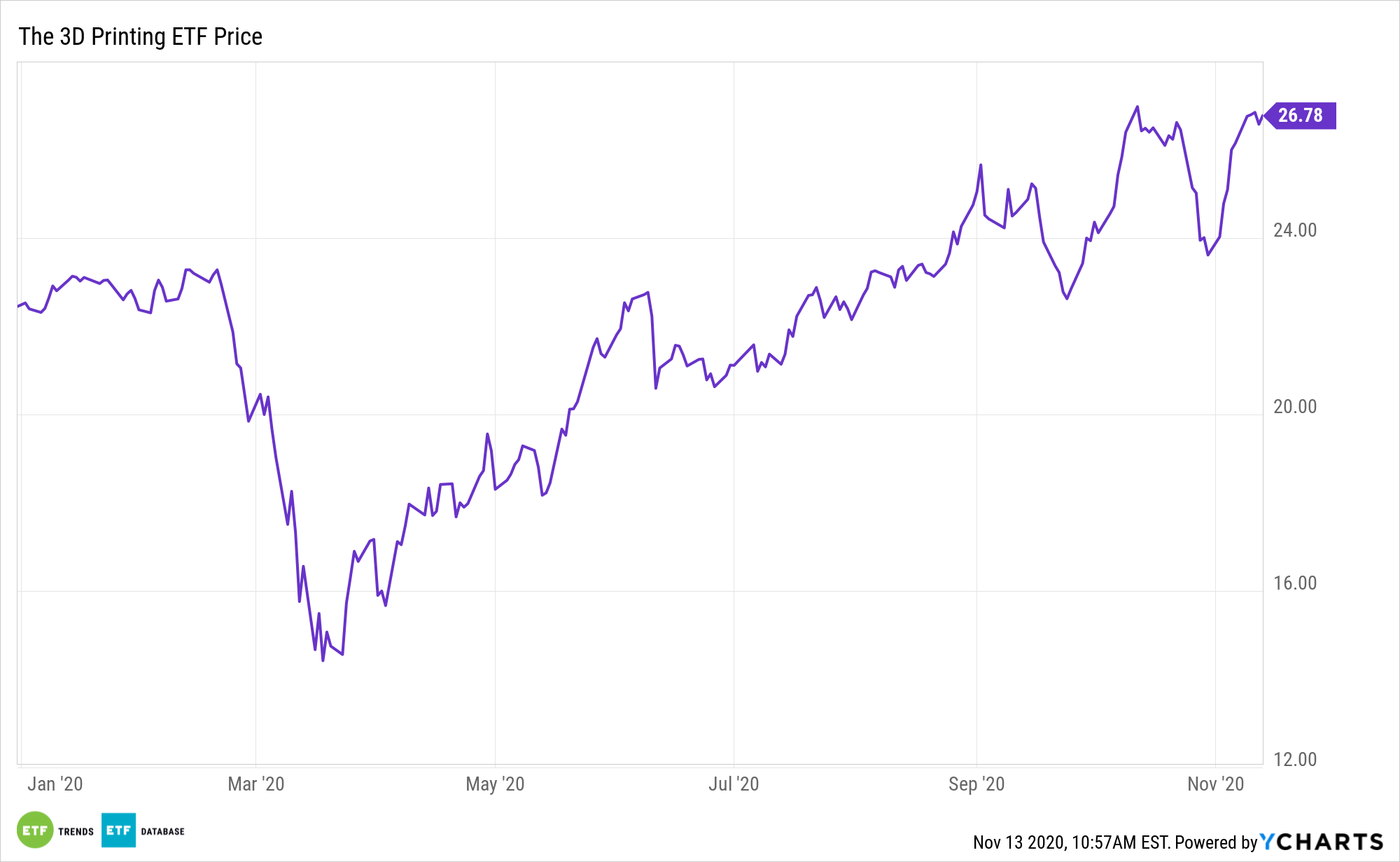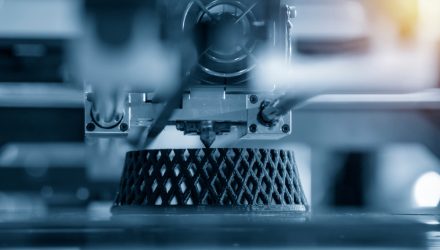Up 18.40% year-to-date, the 3D Printing ETF (CBOE: PRNT) isn’t in need of upside catalysts, but it may be getting one thanks to a new 3D printing stock coming to market.
Passively managed PRNT offers leverage to that department as its benchmark “is composed of equity securities and depositary receipts of exchange-listed companies from the U.S., non-U.S. developed markets and Taiwan that are engaged in 3D printing-related businesses within the following business lines: (i) 3D printing hardware, (ii) computer-aided design (“CAD”) and 3D printing simulation software, (iii) 3D printing centers, (iv) scanning and measurement, and (v) 3D printing materials,” according to Ark.
Desktop Meal, viewed by some as the next big thing among 3D printing equities, is soon to go public via a merger with a special purpose acquisition company. While it remains to be seen if or when Desktop Meal enters PRNT, the stock could be a benefit to the exchange traded fund either way.
“Based outside of Boston, the company was founded in 2015 by a group of entrepreneurs and engineering professors at the Massachusetts Institute of Technology,” according to Barron’s. “You can’t use its printers to produce, say, bright pink plastic fidget spinners or phone cases. Instead, the company’s machines are designed to print in metals like stainless steel, copper, or nickel-based alloys. They can also handle composites that include carbon fiber or fiberglass materials.”
The 3D Printing Revolution
PRNT debuted nearly three years ago as the first US-listed ETF dedicated to the 3D printing theme. The fund is one of two passively managed products from New York-based Ark Investment Management. ARK believes 3D printing will revolutionize manufacturing by collapsing the time between design and production, reducing costs, and enabling greater design complexity, accuracy, and customization than traditional manufacturing.

Desktop Meal fits into an area where many PRNT components are finding success: industrial 3D printing.
“Industrial parts are currently made in many ways, which compete on cost and material properties. Casting, forging, machining, stamping, and drawing are all used to make metal parts. Forging produces the strongest ones, but they tend to be pricey too. 3-D metal printing, for now, aims to replace castings and machined parts. It’s also possible to print some complex and intricate parts that can’t be made using other methods,” reports Barron’s.
The coronavirus pandemic is highlighting numerous applications for 3D printing in the healthcare market, a trend that’s expected to last well beyond the virus’s expiration date. As regulatory guidelines become clearer, healthcare is expected to be a major market for 3D printing products and services in the years ahead.
For more on disruptive technologies, visit our Disruptive Technology Channel.
The opinions and forecasts expressed herein are solely those of Tom Lydon, and may not actually come to pass. Information on this site should not be used or construed as an offer to sell, a solicitation of an offer to buy, or a recommendation for any product.

